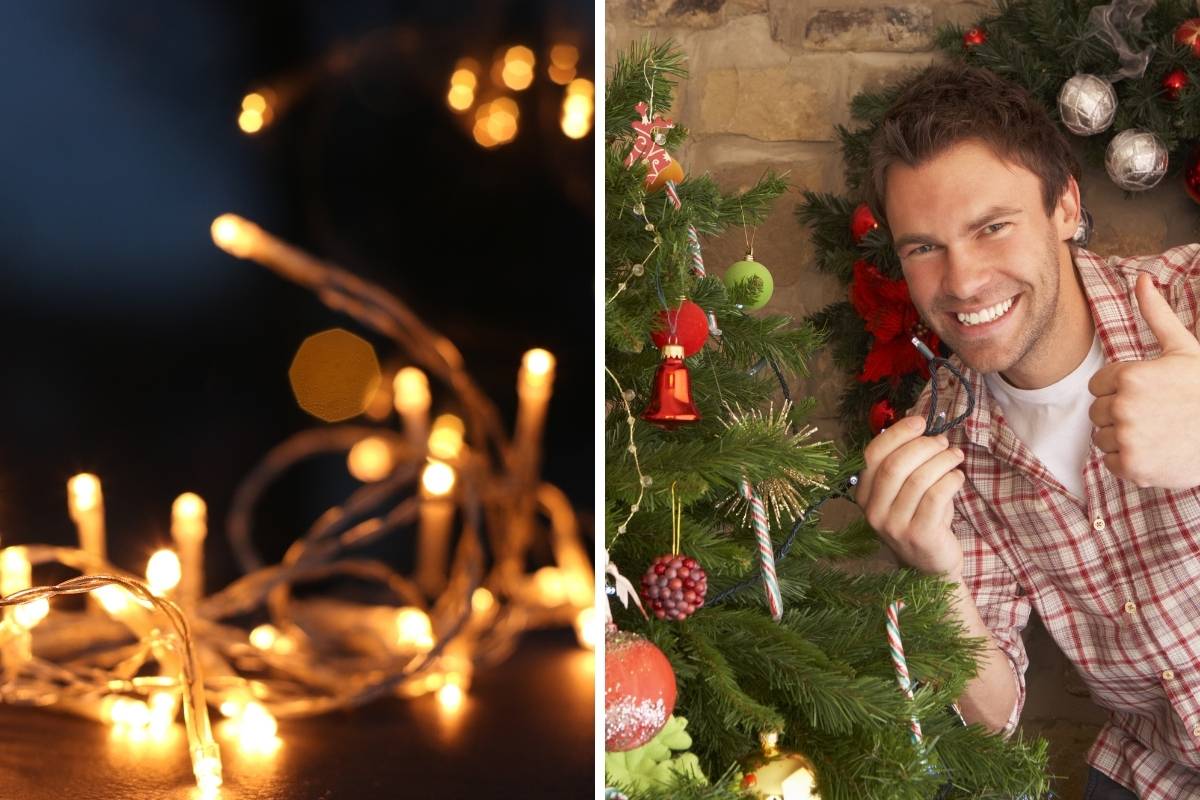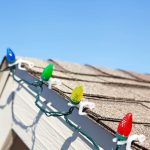So, you are done decorating your Christmas tree and other items with Christmas lights. But then you plug the light string into a power outlet and realize that about half of the whole string does not come on. Of course, finding out that your Christmas lights have some broken bulbs after all that work is discouraging. But before you give up and dump everything, you just might be able to fix the Christmas light strings and save Christmas.
Potential Reasons Why Half a String Might Be Out and How to Fix Them

While fixing string lights that are half out may not be so complicated, you must be patient while trying to detect the problem. Figuring out why they are acting up is perhaps the most vital step when trying to fix Christmas lights.
1. Rusty Plug
The plug is one of the first parts you should examine if half or the entire string of your Christmas lights is off.
Plug issues are relatively easier to detect and fix. So, if you examine the plug first, you can either detect the problem early or cross a potential cause of the problem off your list.
On examining the plug, if you notice significant rust around the pins, this may be the problem. Rusty plug pins may resist the flow of electricity more than usual. As a result, the whole string may not be getting sufficient voltage.
Solutions:
- If the pins of the plug are rusty, try to sand the rust off. Ensure the light string is not connected to a power outlet while you are doing this.
- But if this does not fix the problem, and if there are no signs of a burnt plug, move to other potential causes.
Loose Bulb
Sometimes, the problem is just one bulb; if one of the bulbs in your light string is loose, half the lights may not come on.
The loose bulb will have an unstable connection with the terminals in its socket, and whenever it is not connected to the terminals, all the lights within the same circuit will go off.
To check if your Christmas tree lights have a loose/shaky bulb, connect the string to a light socket. Next, gently flick each bulb in the faulty section. If you find that the lights go on and off when you touch/gently shake one of the bulbs, that bulb is most likely loose.
If you have a long light strand, flicking each bulb to find the faulty bulb can be time-consuming. So, to save yourself the time and stress, get a Christmas light tester instead. With a Christmas light tester, you can fish out the bad bulbs in a shorter time.
Solutions:
- Try to fit the bulb into its socket properly.
- If the first option does not fix the problem, examine the bad bulb closely to see if it is blown. If the bulb is blown, get a replacement bulb.
- Ensure the replacement is of the same type.
- Also, make sure you disconnect the lights before replacing the bulbs.
- If the glass part of the bulb is loose within its plastic base, you may also need a replacement bulb.
- If there are many loose bulbs in the string, try out these solutions on each one.
Burnt Bulb
As with a loose bulb, if one light bulb in one of the circuits of your Christmas lights is burnt, every other bulb within the same circuit will not come on.
So, how do you detect a burnt bulb? You might be able to tell a bad bulb from a good bulb through visual inspection.
- If you see a light bulb that looks dark or partially dark (especially around the center or top of the glass), it is most likely burnt.
- A burnt bulb may also look smoky.
- If you notice any bulb without filament or with its filament in an awkward position, it is a bad bulb.
If the signs are not readily obvious, visually inspecting string lights for a burnt bulb can take time. So, instead of trying to fish out the faulty bulbs with just your eyes, you can use a bulb tester alongside visual inspection.
To use the bulb tester, just follow the instructions provided by the manufacturer.
Solutions:
- If you detect burnt bulbs, all you have to do is put replacement bulbs in their place. Of course, the replacements should be of the same type.
- Ensure you disconnect the lights before replacing the bulbs.
- After replacing the burnt bulbs, if the lights are still out, check the entire strand again to ensure you got all the burnt bulbs. If you missed out any burnt bulb, replacement it and test the lights again.
- If you are sure you replaced all the burnt bulbs, confirm that the replacements are good (use the bulb tester). If the replacements are okay, there might be a problem with the wires.
Wire
If all the bulbs in the faulty strand show no signs of damage, your Christmas tree lights may have some faulty wires.
So, how do you detect if there’s an issue with the wires? To tell if the wires are bad, do the following:
- Connect the faulty string to a power outlet.
- Next, connect a string of working lights to the faulty string.
- If the good string comes on when connected to the faulty string, then the wires are okay. But if the good string does not come on, the wires might be the problem.
- For incandescent lights, the problem might be the wires or the shunt within the bulbs.
Solution:
- Replace the wiring: One easy way to do this is to get some extra strings. Remove the bulb on those strings and store them as replacements. Then use the bulb-less strings as replacement wiring.
- Ensure you disconnect the light before doing this.
- Do not try to replace the wiring any other way if you are not sure of how the wiring of Christmas lights work.
Damaged Shunt
If replacing the wiring and bulbs of your incandescent Christmas lights does not fix the problem, the bulbs may have a bad shunt.
Solution:
To fix Christmas lights with bad shunts, you need a light repair tool. Once you have that, do the following:
- Remove one of the bulbs close to the faulty section. Alternatively, you may remove a bulb within the faulty section (preferably the first bulb).
- Next, insert the bulb socket into the light repair tool, following the instructions for the tool.
- Then send pulses through the socket according to the instructions for the tool.
Blown Fuse
It is unlikely for a blown fuse to cause half your string to stay off. Typically, if a fuse is blown, all the string of lights connected to the same power outlet will not come on.
But then, if every other solution fails, it wouldn’t hurt to confirm what’s going on with the fuse.
So, if you’ve tried everything else, and they did not work, disconnect the lights from the outlet. Next, open the fuse compartment, remove the fuses within and examine them.
Solution:
- If any of the fuses is darkened or looks burned, replace it. Also, if the fuse is transparent, and you notice the wire within is absent or has melted into two pieces, replace it.
- After replacing the fuses, your holiday lights should come on.
Check Your Circuit Breaker
If there’s any issue with the circuit breaker, the entire string of lights will not work because the power outlet will not receive power. So, it is unlikely that your circuit breaker will affect just half your string.
Still, if everything else, including using replacement fuses, fails, you could try checking your circuit breaker.
One sign that should prompt you to check your circuit breaker is if other lights within the same part of the house are not working.
Circuit breakers work to break the flow of electricity if there’s an overload. Until one resets the circuit breaker, every outlet connected to it may not get power.
Solution:
- Go to your circuit box panel.
- Identify the tripped circuit (it’s usually the one whose switch is slightly skewed compared to the rest).
- Reset the circuit by switching it off and then on.
- Next, cover the box and check if the lights work.










